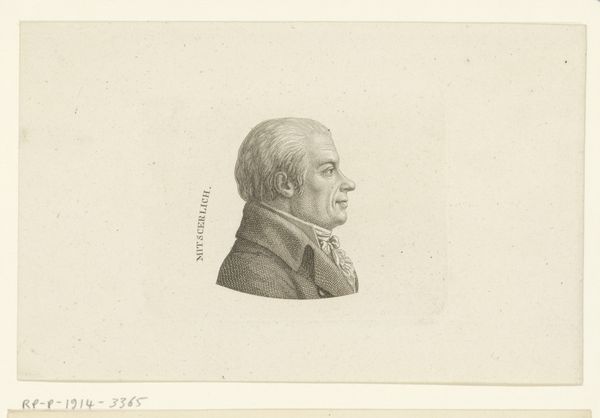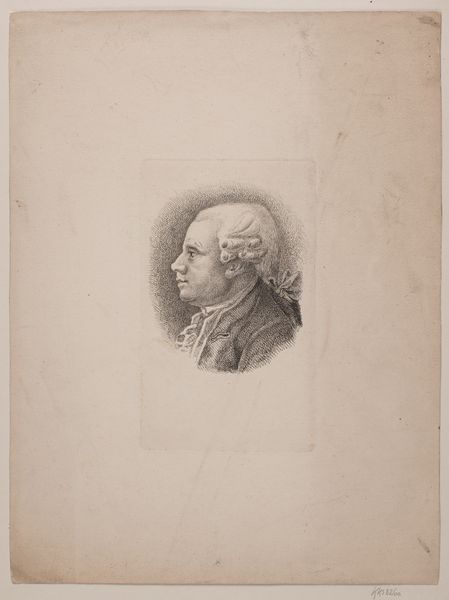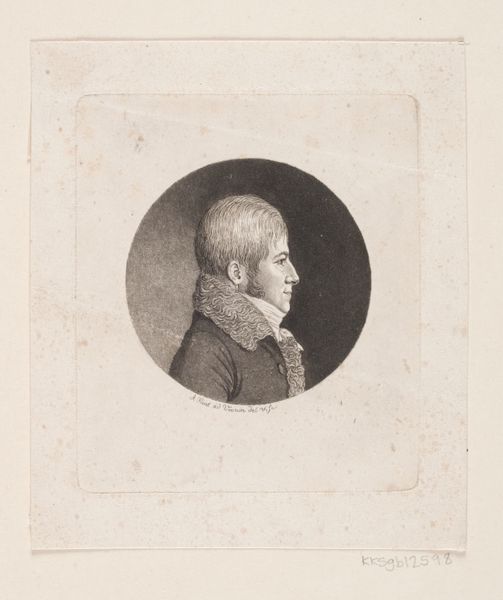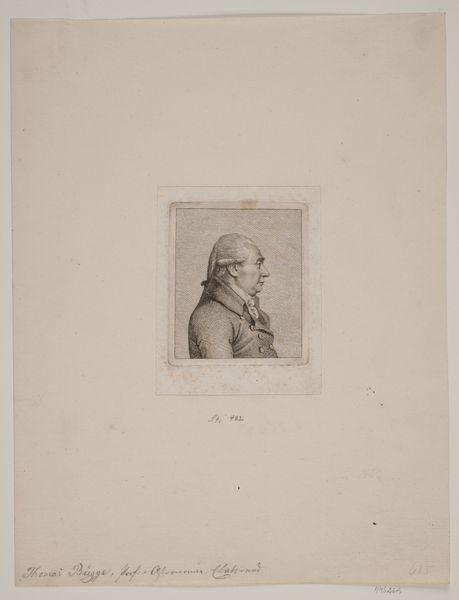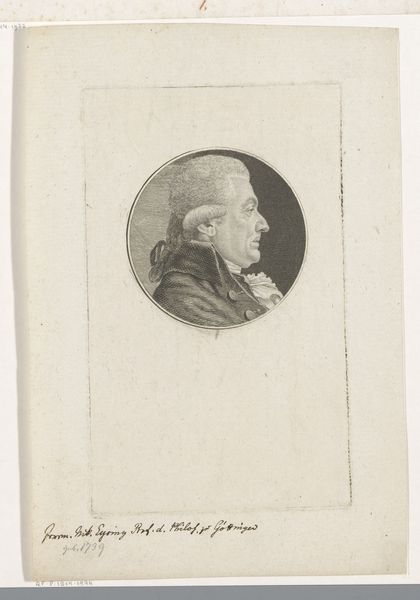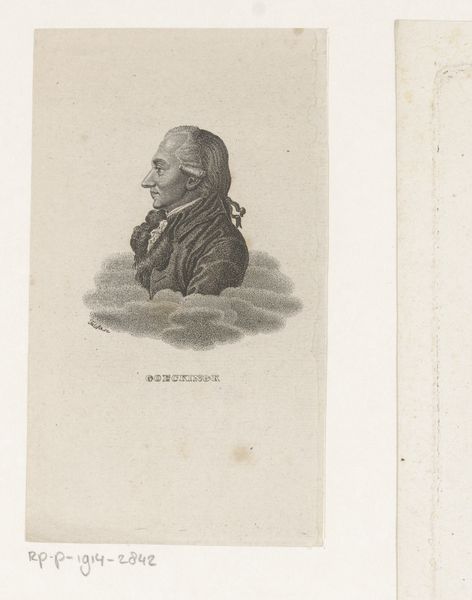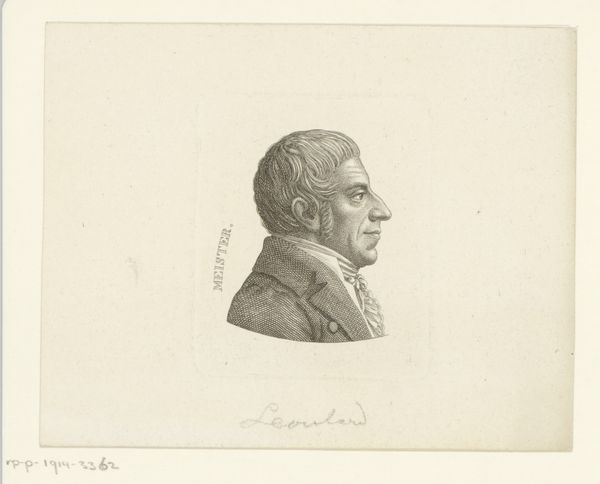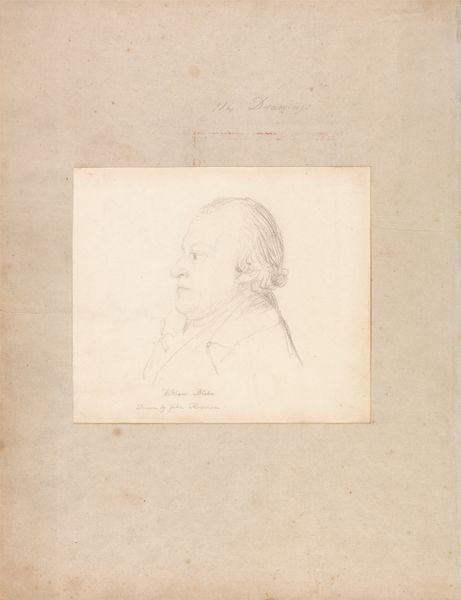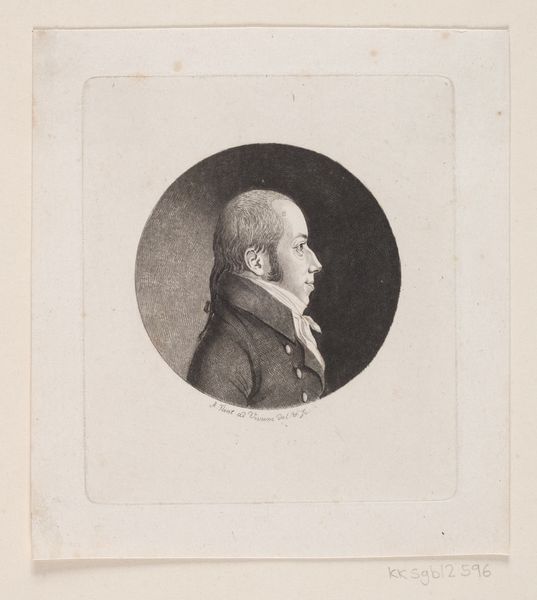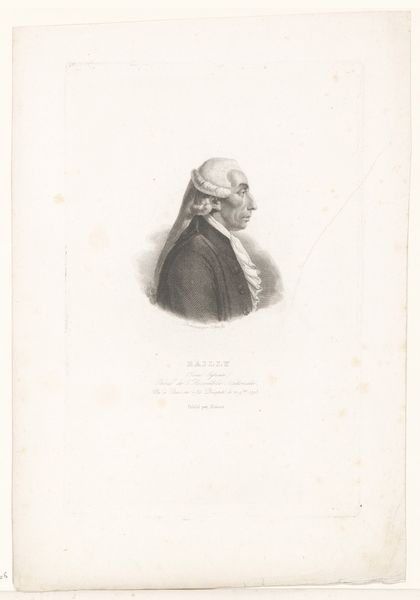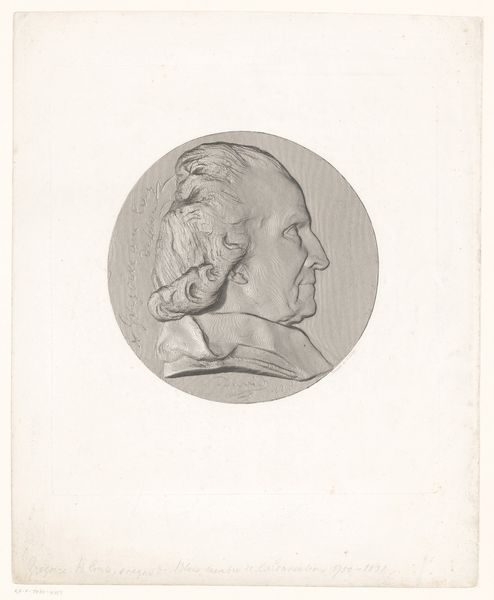
print, engraving
#
portrait
# print
#
old engraving style
#
pencil drawing
#
history-painting
#
engraving
#
realism
Dimensions: height 65 mm, width 89 mm
Copyright: Rijks Museum: Open Domain
Curator: Allow me to introduce a portrait created by Ernst Ludwig Riepenhausen, titled "Portret van Gottlieb Jakob Planck," dating sometime between 1775 and 1840. It's an engraving. Editor: The precision is striking. I'm immediately drawn to the fine hatching and cross-hatching—it almost gives the figure a sense of depth beyond what you'd expect from a simple profile. There’s also the use of blank space surrounding the subject. It forces us to confront every miniscule line. Curator: The sharp, controlled lines contribute to a very composed, even formal presence, wouldn't you agree? Editor: Absolutely. And considering engravings are usually mass produced; what social message do you think it carries to disseminate such an image into society? It begs the question, who was Gottlieb Jakob Planck? Curator: A pertinent question. As the title suggests, it’s Gottlieb Jakob Planck. He was a German theologian and historian. Note how the formal attire –the powdered wig, the high collar, the cut of his jacket– communicate a particular social status and intellectual gravitas to contemporary audiences. It adheres to an established representational mode for portraying influential figures. Editor: Yes, I note that. While realism governs the facial features and their depiction of age, elements such as clothing contribute to a highly stylized image for this important personage. The way the artist used line-work across planes creates tonal gradations to convey not only depth but texture on the surface. In looking closely at this piece, I notice a great use of chiaroscuro; a wonderful application of this renaissance technique, although used by an 18th century hand! Curator: Riepenhausen obviously possessed formidable technical skills. His ability to translate texture and light using only line is masterful. One can almost feel the fabric of Planck’s jacket or see the individual hairs of his wig. And the engraver obviously sought to honor his place in society. Editor: It does make me consider the relationship between the artist and subject. Did Riepenhausen seek to simply reproduce Planck’s likeness or was he looking to create a public figure through composition and minute, controlled hatching of the lines? Curator: Good point. This engraving serves both as a record of likeness and as a symbol of Planck’s importance. I’m glad we were able to pause and admire this, so laden with social meaning, so very skilled engraving!
Comments
No comments
Be the first to comment and join the conversation on the ultimate creative platform.
